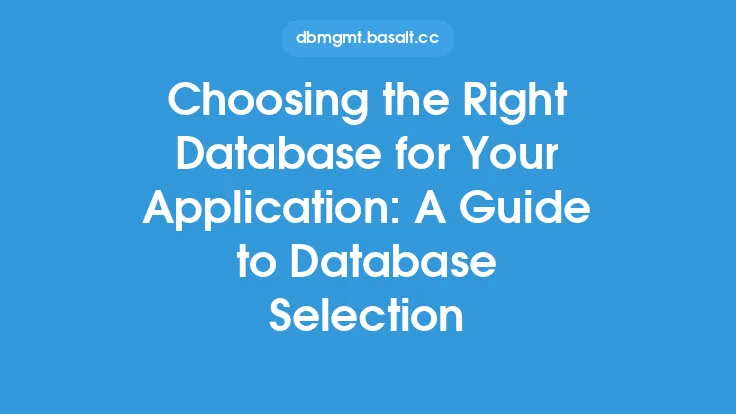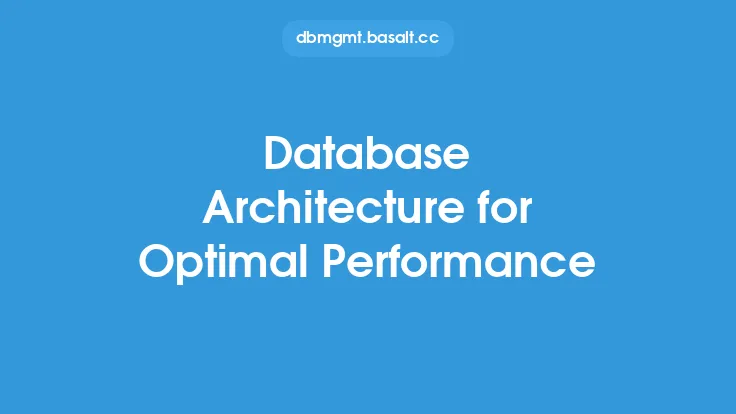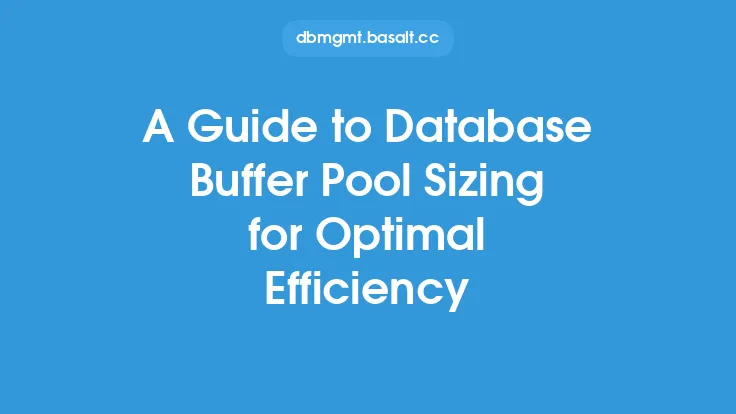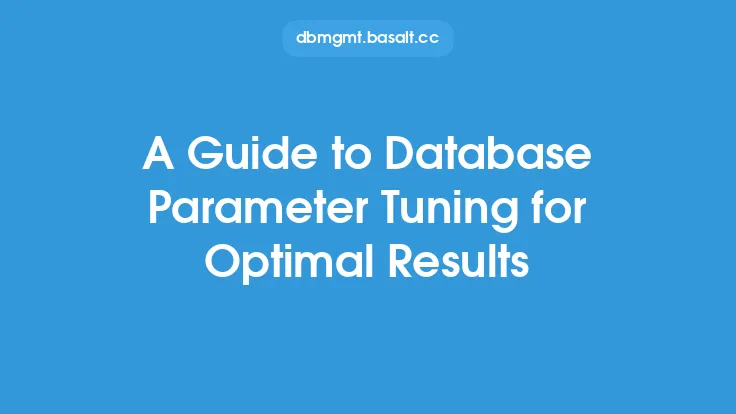When it comes to selecting a database for your application or organization, there are numerous factors to consider. A database is a critical component of any data-driven system, and choosing the right one can have a significant impact on performance, scalability, and overall success. In this article, we will delve into the key criteria to consider when selecting a database, providing you with a comprehensive understanding of the factors that contribute to optimal performance.
Introduction to Database Selection Criteria
Database selection criteria can be broadly categorized into several key areas, including data model, scalability, performance, security, and compatibility. Each of these areas plays a vital role in determining the suitability of a database for a particular use case. By carefully evaluating these criteria, you can ensure that your chosen database meets the needs of your application or organization, both now and in the future.
Data Model Considerations
The data model is a fundamental aspect of any database, and it is essential to consider the type of data you will be working with when selecting a database. Relational databases, such as MySQL and PostgreSQL, are well-suited for structured data, while NoSQL databases, such as MongoDB and Cassandra, are better suited for unstructured or semi-structured data. Additionally, consider the complexity of your data model, including the number of relationships between entities, data types, and indexing requirements. A database that supports a flexible data model, such as a document-oriented database, may be more suitable for applications with complex or evolving data structures.
Scalability and Performance Considerations
Scalability and performance are critical considerations when selecting a database. You need to consider the expected volume of data, the number of users, and the required throughput. A database that can scale horizontally, such as a distributed database, may be more suitable for large-scale applications. Additionally, consider the performance characteristics of the database, including query optimization, indexing, and caching. A database that supports advanced performance features, such as parallel query execution and materialized views, may be more suitable for applications with high performance requirements.
Security Considerations
Security is a top priority when it comes to database selection. You need to consider the sensitivity of your data, the required access controls, and the compliance requirements. A database that supports robust security features, such as encryption, access control, and auditing, may be more suitable for applications with sensitive data. Additionally, consider the security certifications and compliance standards that the database supports, such as HIPAA, PCI-DSS, and GDPR.
Compatibility Considerations
Compatibility is another critical consideration when selecting a database. You need to consider the programming languages, frameworks, and tools that your application uses, as well as the operating system and hardware requirements. A database that supports a wide range of programming languages, such as Java, Python, and C++, may be more suitable for applications with diverse development teams. Additionally, consider the compatibility of the database with other tools and systems, such as data integration platforms and business intelligence tools.
Evaluation and Comparison of Database Options
Once you have identified the key criteria for your database selection, you can begin evaluating and comparing different database options. This involves researching the features, performance, and scalability of each database, as well as reading reviews, case studies, and benchmarks. You can also engage with the database community, attend conferences and webinars, and participate in online forums to gain a deeper understanding of each database. By carefully evaluating and comparing different database options, you can make an informed decision that meets the needs of your application or organization.
Best Practices for Database Selection
To ensure optimal performance and success, it is essential to follow best practices for database selection. This includes defining clear requirements and criteria, evaluating multiple database options, and engaging with the database community. Additionally, consider the total cost of ownership, including licensing fees, support costs, and maintenance requirements. By following these best practices, you can ensure that your chosen database meets the needs of your application or organization, both now and in the future.
Conclusion
In conclusion, selecting a database is a critical decision that requires careful consideration of several key factors, including data model, scalability, performance, security, and compatibility. By evaluating these criteria and following best practices, you can ensure that your chosen database meets the needs of your application or organization, providing optimal performance, scalability, and success. Whether you are building a new application or migrating an existing one, a well-chosen database can make all the difference in achieving your goals and objectives.





